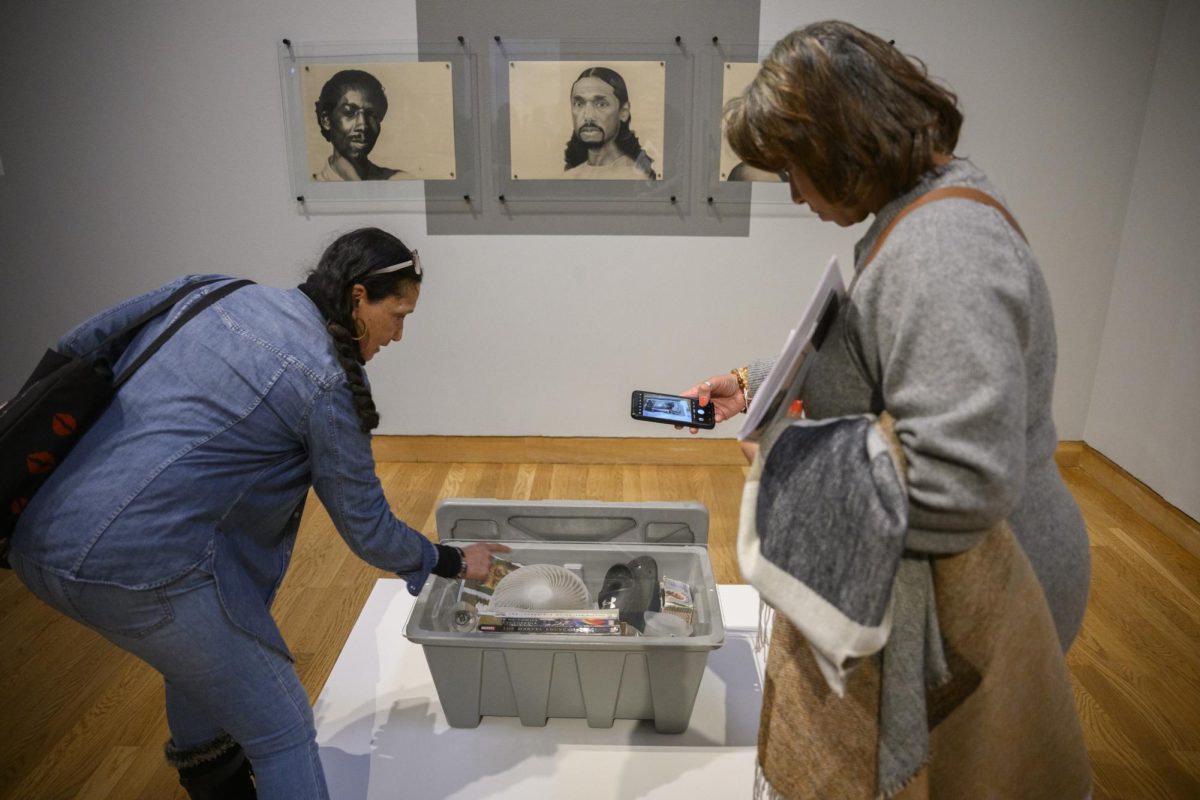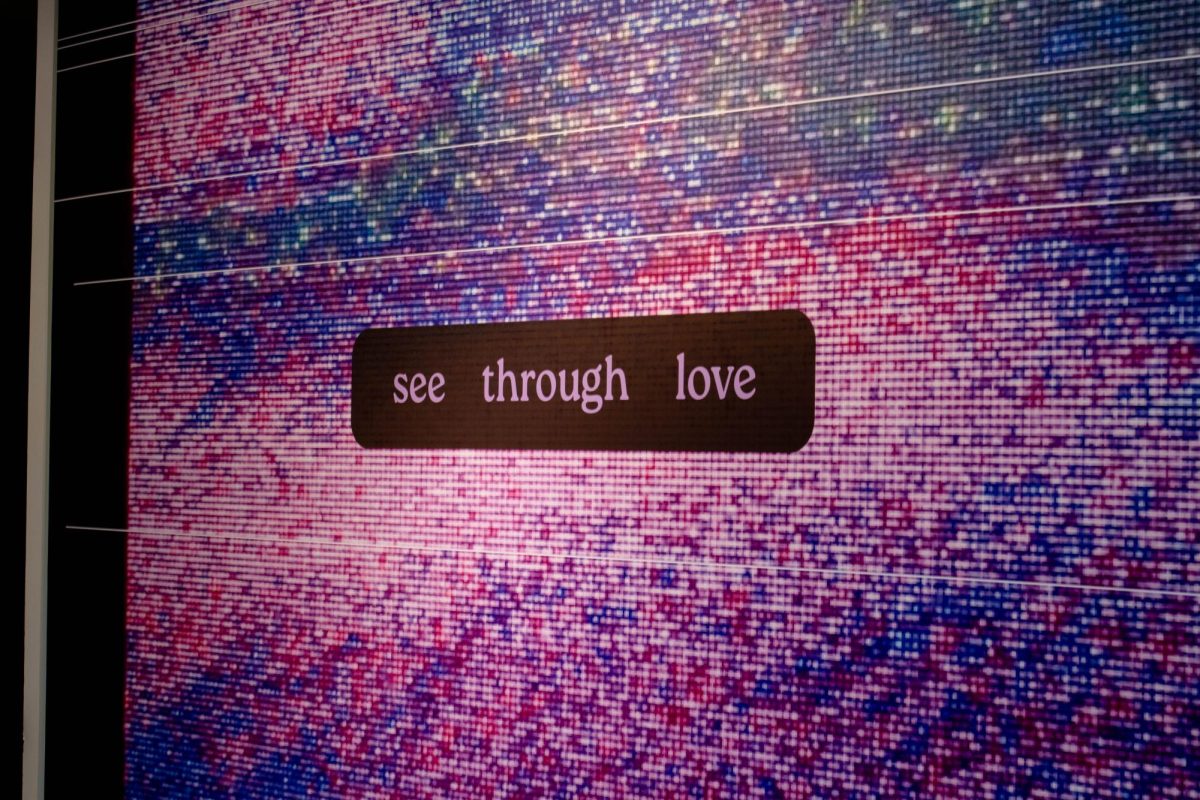Ever seen a commercial for Sandals resorts? A slim, white-haired couple drinks piña coladas, lies on hammocks, and falls deeper in love in front of an indistinguishable but vivid ocean. There’s almost something “Twilight Zone”-ish about it once you consider that there are no local people, and it’s impossible to tell what country they’re in.
WHEN: Jan. 27 – March 2
WHERE: Gallery 360, 311 W. 50th St., Edina
An alternative to the cheesy post-card perfect image is “Far From Home,” an exhibit of mixed media by Mike Carina, a traveler who has seen many a corner of the globe. His canvases attempt to capture experiences as he sees them in his mind, complete with fuzzy edges and bird songs.
He took time to e-chat with A&E about the process of portraying visually the many layers of a foreign land’s essence.
What types of traveling have you done that have led you to create the concept of “Far From Home?”
My wife and I have made it our mission to embark on at least one “big trip” per year, such as outback Australia, Easter Island, South America, Central America, Europe, etc. Our intention is to stray as far from the beaten path as possible to find places otherwise overlooked. And my day job finds me traveling abroad to places that support the retail market, like Paris, London, Amsterdam and primarily China.
Tacking on free time to these work trips allows me a glimpse into places I’d never thought of going on my own. These glimpses seem more exotic and precious because of their brevity – almost like waking dreams. Some of my favorite destinations have been densely populated cities once considered rural like Shenzhen and Shanghai in China. The concept of being “lost” in these booming, chaotic cities feels like the farthest from home that I could be.
Is there any country that has a particularly strong sensory memory for you?
Costa Rica still resonates in my ears – from mysterious and foreign birdsongs, hummingbirds buzzing through cloud forests and howler monkeys barking like thugs in the mornings. Conversely, China’s ever-present smell of melting plastic and fiberglass is an olfactory reminder of how polluted and toxic a country can be while still holding the record for population density. I try not to judge either experience; rather, I’m grateful for the ability to catalog both.
What types of artistic techniques expand a depiction of a scene? I read that we get visual information from sounds (such as determining how far away things are from one another) and I was wondering if you use your other senses in this way.
I rely on sounds primarily to recall an overall mood – I like to work in low light to allow that sense to work harder. I listen carefully to the details while traveling. In our noise-ridden cities, it’s a must. I read somewhere that certain bird species that have grown accustomed to urban environments are dwindling in population due to the fact that they can’t hear their mates’ calls.
Birds and their calls are important to me. The ones that get my attention invoke a sense of loneliness. It’s a feature I build into my paintings – this idea that nature as a sound-scape is quite rich and layered. Like my work, a lot lies in the distance.
Is there any psychological literature that has influenced your art?
Not really. I read a lot of science books – documentation and data of birds and animals that are in trouble here on earth. It’s the learnings from this type of information that fuels my work. Emotionally speaking, I go between moments of fascination and wonder to furious outrage – it’s exciting.
Actually, recently in a dream, I came across a tree shape that I use almost exclusively in my work now. I’m beginning to realize the importance of giving shape to these images that mean more to me than I realize yet and I enjoy this element of mystery. There is a level of unconsciousness that goes on while I’m working. This “zone” can be a place for me to better understand myself. For example, I use a lot of handwriting to build tone. I’m often asked the relevance or content of this writing, to which I often can’t explain – it seems to come from a place that has a memory for writing.
When you travel, do you compile materials to use for your art?
Yes. I carry a sketchbook everywhere I go for capturing details. It’s my way of keeping track of the time spent with a lot of notes, doodles and observations. I also photograph throughout the day as the lighting changes. Occasionally I’ll bring back local ephemera to collage into my work – newspapers, magazines, bus tickets, etc.
How does portraying a memory differ from portraying a landscape?
I think it forces me to think less literally and explore my relationship to the past more honestly. It’s hard, like recalling a dream just after waking – some bits come to you by lunchtime, but by five o’clock the message is lost or distorted and those gaps are filled in with logic and reason. Memories always come out more exaggeratedly while trying to draw them which (I hope) offers the viewer a more exotic and fantastical look at my experience.







